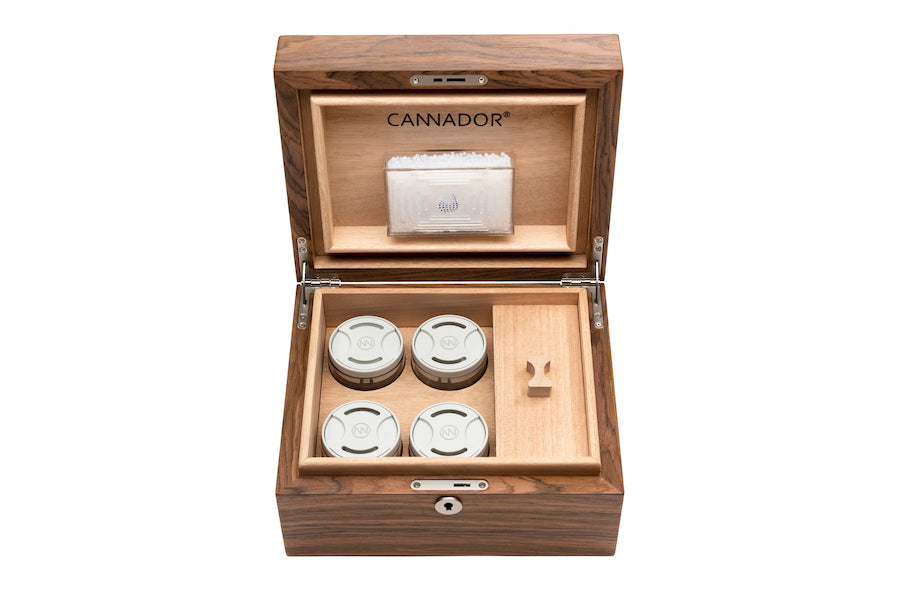The words “Top Shelf” get frequently tossed around in the cannabis industry, probably because after decades of being dealt schwag weed littered with seeds and stems, we’re all desperate for something better and we finally have choices. Juicy, fat, succulent, sugary, well-trimmed, organically grown, long-cured, pungent, sweet nugs are just a few of the words we use to describe what’s on the top shelf. They’re the cream of the crop, the cultivators best selection, and therefore, the most expensive. But with so many “Cannabis Cups” and awards that are seemingly handed out to prized cultivators like candy, it’s hard to know which nugs are truly top shelf. We investigate how to identify top shelf weed by breaking down the key characteristics you can use to help identify those that make the cut.
Color and Texture (density)
The color and texture of buds have a lot do with the strain’s phenotype and how it’s grown. The soil, amount of light or water, the use of fertilizers (whether organic or synthesized) all affect the strains traits, which results in the density, color, and shape of the finished bud. We wish we could go further into detail over what cultivation techniques augment or affect specific strain traits, that would not only be interesting, but master growers would have it all too easy. According to the Trichome Institute’s Interpening Loop Guide, very dense buds strongly correlate with an indica dominant strain whereas whispy open buds correlate with a sativa dominant strain. Overall, top shelf buds don’t look airy or scrawny by any means. Top shelf buds are well-manicured, tight trimmed, often sugary and sticky from the trichomes. They should almost shimmer in the light from the trichome density. The color should be vibrant and not dull. Low quality buds can sometimes take a brown or grey appearance in color whereas high quality buds take on a rich and vivid color.
Nose (smell)
Similar to wine, each strain is unique in its own terpene profile. There are two factors that affect the nose of a strain: genetics and curing. Genetics is just that, the buds gene makeup, whereas curing is a process that takes place after harvest. Within the genetics factor, it’s important to take into account that there are over 200 terpenoid compounds have been identified in cannabis. This is what results in the aroma, flavor and therapeutic effects you get after smoking. Eight of these compounds are most frequently found in common strains (taken from of Green: A Field Guide to Marijuana):

Curing is the second and arguably most important final stage in cultivating cannabis because if a strain is improperly cured, all the energy and resources that went into growing the plant won’t be fully recognized if the buds don’t reflect the phenotype traits. For example, buds can take on the smell of hay due to a build-up of chlorophyl if they’re not burped (opening the jars to let out the CO2 during curing). If too much moisture is present, the buds can mold or take on a funky smell. Even the length of curing can influence the finish. Our interview with renowned grower Michelle “MissRadreefer” discusses how a 3-month cure can make all the difference in taste: The Three-Month Cure. Top shelf weed should reflect the terpene profile and phenotype of the strain and it should not smell like hay.
High (feeling)
Without getting too deep into discussing the chemical makeup of cannabis, it’s important to know the basic chemistry so you can understand why you feel a certain way after you smoke a certain strain. Coined by Israeli organic chemist and leading cannabis expert, Dr. Raphael Mechoulam, “The Entourage Effect” is the combination of over eighty-five different cannabinoids reacting with your cannabinoid receptors after you consume the buds. There are six primary cannabinoids that are most common where THC and CBD are the major cannabinoids that make up 8-20% and 1-4% of the overall potency, respectively. The other four minor cannabinoids, CBN, CBC, CBG, and THCV make up less than 1% of the overall potency.

THC is the primary psychoactive cannabinoid which is responsible for the high feeling. An extremely high THC potent strain can be over-powering to the inexperienced, yet the CBD potency, which is non psychoactive, is like THC’s counter, resulting in a calming, therapeutic feeling. Top shelf weed should give you the effect that the bud tender states and is advertised, but everyone is different so there may be subtle differences in feeling. Top shelf weed should be potent, so if you’re a ‘one-hitter-quitter,’ then you should proceed with caution. The effects should be felt immediately and you shouldn’t have to smoke much to feel its power. Low quality weed may not give you the full “entourage effect,” although these chemicals are clearly at work. This is because it may be extremely low in some of the cannabinoids previously described. Therefore, in order to achieve a desired high, you may have to smoke more of the low quality weed than you would top shelf weed given the lower level cannabinoids and potency.
In summary, top shelf weed should be therapeutic and potent, colorful and vivid, tasteful and aromatic, and it should reflect the phenotype of the cannabis strain by fully embodying its traits.




